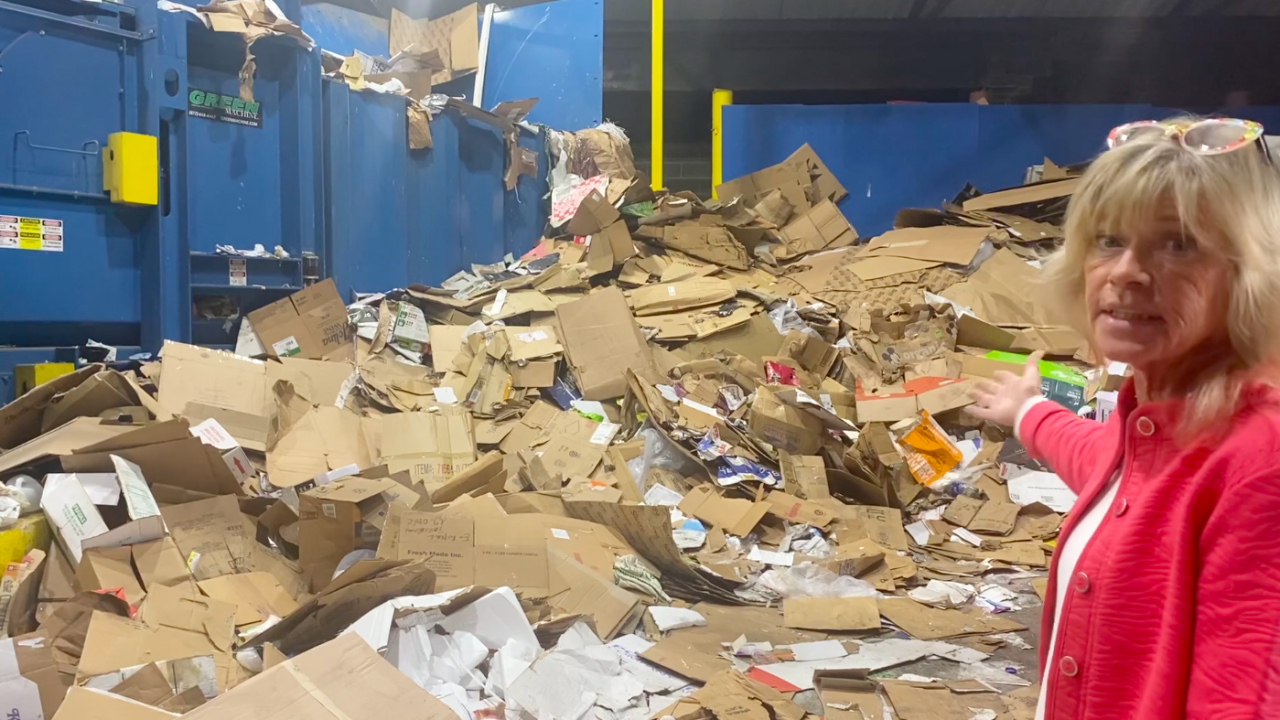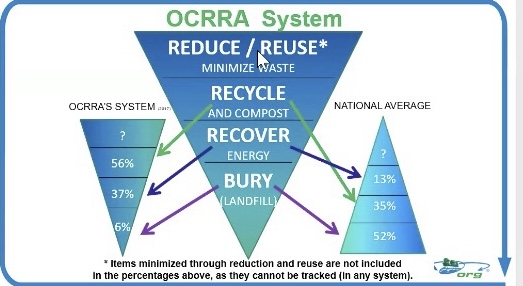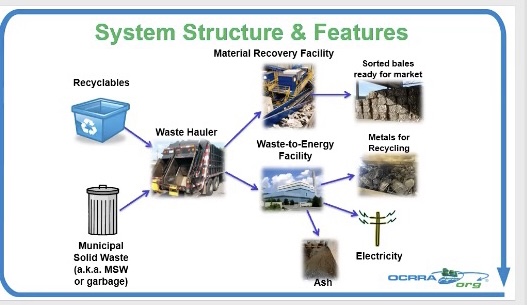
SYRACUSE, N.Y. (NCC News) – Americans have thrown away 40 million tons of food and according to Onondaga County Resource and Recovery Agency (OCRRA), residents throw out 20% of food waste, averaging 6,000 tons per year. Items that residents throw out can be recycled, outsourced and turned into power to generate electricity for 3,000 homes.
“The thing that people don’t recognize about waste is that after you throw it away there’s
an entire industry there,” Cristina Albunio, an environmental engineer, said.
Haulers who collect residents’ trash transport it to the Waste-to-Energy Facility. All of the waste collected is locally managed by OCRRA because transporting waste on a train or at a far distance can increase climate impact and greenhouse gas reduction.

The waste is dropped into a boiler that exceeds 1800 degrees Fahrenheit. The steam that comes from the trash being disintegrated turns turbine blades that become electromagnetic energy, ultimately producing electricity. OCRRA sells this electricity to National Grid as a revenue source to help maintain operations.
“Electricity is becoming a hotter commodity now, we’re trying to have more electric vehicles, we’re trying to rely on electricity more and fossil fuels less,” Albunio said.
The Waste-to-Energy facility operates year-round for 24 per day. The idea that trash will always be around means electricity can always be generated and used in different ways. Albunio said as they expand their electric capability in the United States, they are going to be in a good position to be a good energy source that is sustainable. OCRRA facilities also have limits on the things they can collect and use.

Albunio said, “We utilize a Waste-to-Energy facility, and that facility processes all of our municipal solid waste every year, so things that you can’t compost, things you can’t recycle, things that can’t go into a C&D [construction and demolition] landfill all go into our Waste-to-Energy Facility.”
The construction and demolition landfill located in Camillus also produces new materials out of the trash they receive. This landfill is able to produce
Syracuse Haulers is a local waste removal and recycling agency that has been in business since 1991. With over 100 employees, Syracuse Haulers operates for residential, commercial and construction customers, including building demolition. The commercial loads that are brought into the facility get dumped onto their tipping floor and sorted through for paper and cardboard.
“The goal is to get as much clean cardboard and paper as you could because those are your two commodities that are the easiest to sell” Dianna Amidon, project manager at Syracuse Haulers, said.
All plastics are not considered commodities because companies Syracuse Haulers sell to are looking for specific classifications to reuse and recycle them. The cardboard and paper pulled from their dumping system is moved to their baler to compact the recyclables. Companies like GP Harmon Recycling LLC and Westrock Paperboard Mill take these materials and create new resources like paper bags, cardboard, and packaging.
Recycling starts at the source, employees who work at dumping sites said that if trash was separated sooner, process and operations would also help move things along.
“If you’re trying to send out paper you don’t want cans and stuff in it, so you just have to separate it” Willie Parker, an employee at Syracuse Haulers, said.




